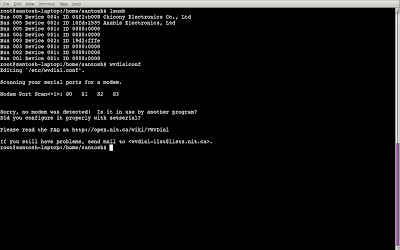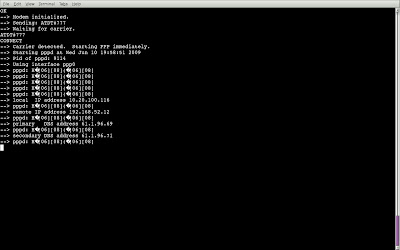Cutting straight to the point, configuring it for ubuntu may be as simple as the following four steps:
1.In superuser mode, type lsusb at the shell prompt.
root@santosh-laptop: lsusb.
This will list all the usb ports on your pc.
2.Then at the shell prompt type in the command
root@santosh-laptop:wvdialconf.
If this works, it will say modem detected at some port.But life again ain't so easy.It may well not recognise any modem and give a output something like below:

Now to overcome the problem you have to make the following changes:
1.Remove comment on the below lines in /etc/init.d/mountdevsubfs.sh:
mkdir -p /dev/bus/usb/.usbfs
domount usbfs '''' /dev/bus/usb/.usbfs -obusmode=0700,devmode=0600,listmode=0644
ln -s .usbfs/devices /dev/bus/usb/devices
mount –rbind /dev/bus/usb /proc/bus/usb.
Note: The above lines will be found in the do_start() function.
2. Now type in the following command:
modprobe usbserial vendor=0x05c6 product=0xfffe
Now the vendor and the product id may be different for your data card. You have to find that out for yourself.
Hint: These numbers were listed in my lsusb output ---> 19d2 and fffe. Just add 0x before them to make them hexadecimal.
3. Now again type in the command wvdialconf at your shell prompt.This will edit the file /etc/wvdial.conf. Open it using any editor and make in the following changes:
type in--> Stupid Mode = 1 at the end of this file.
Also type in the username and the password infront of the username and password row. Type in your phone name as #777.
4.Now type in the command wvdial at the shell prompt:
root@santosh-laptop:wvdial
Hurray !! your net has been connected and it looks something like this:

Acknowledgement: Thanks to Santosh Mukherjee (sam.sensation@gmail.com) for writing this post.

BSNL EVDO Data Card Complete Queries Answered
ReplyDeletehttp://bsnl-evdo-datacard.blogspot.com/